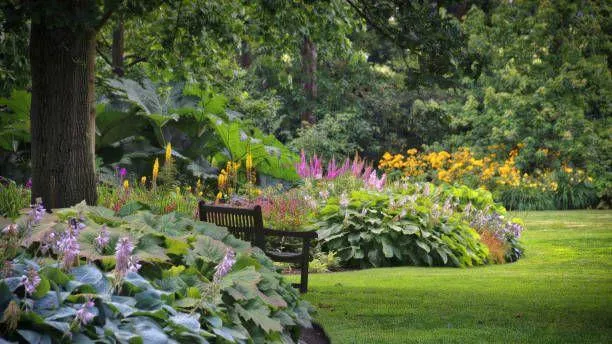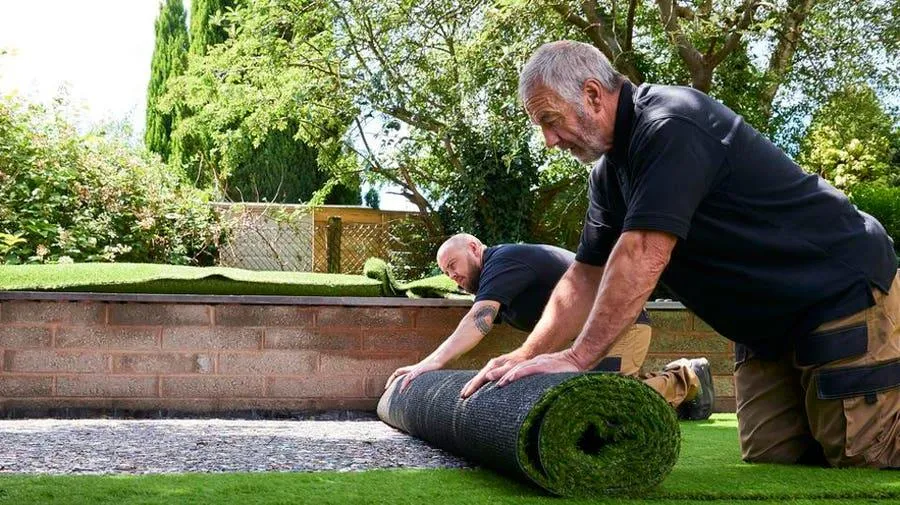Everything You Need to Know About Having Trees Around the House
If you’ve searched for “household trees,” chances are you’re thinking about adding some greenery to your yard or indoor spaces. But with so many tree species to choose from, it can be tough to decide what will work best for your home. This comprehensive guide will cover all the bases, from small trees for patios to large shade trees for the lawn. By the end, you’ll have all the info you need to pick the perfect trees.
Benefits of Household Trees
Before getting into specific tree recommendations, let’s review some of the top benefits trees provide around the house:
- Adds natural beauty and curb appeal. Well-placed trees frame views and complement architecture.
- Provides shade and wind protection. Strategically placed shade trees lower temperatures and energy bills.
- Boosts property value. Homes with mature trees tend to sell for higher prices.
- Filters air pollutants and improves air quality indoors and out.
- Absorbs storm water runoff, reducing flood risks.
- Attracts birds and wildlife, creating an vibrant outdoor space.
- Increases privacy between neighbors or zones in a yard.
As you can see, trees offer functional perks beyond just aesthetics. Choosing the right types can significantly enhance both your home’s features and environmental sustainability.
Trees for Small Spaces
If yard space is limited, don’t rule out trees altogether. Several excellent options stay naturally small and are perfect for patios, decks, or compact gardens.
- Dwarf Crape Myrtle – Blooms in summer and stays under 15′. Low maintenance.
- Japanese Tree Lilac – Fragrant white blooms. Slow growth to 15′.
- Dwarf Eastern Redbud – Pretty pink flowers appear before leaves. Mature height 10-15′.
- Dwarf Pears – Ornamental varieties fruit in fall. Size varies, some just 5-10′ tall.
- Parrotia – Also called Persian Ironwood. Fall foliage colors and exfoliating bark. Grows 15-25′.
These small-stature trees add verdant appeal without taking up much room. Just be sure to provide adequate space around and above for growth as they mature.
Large Shade Trees
For yards with more breathing space, large shade trees are an investment that will pay dividends. Properly placed, a single tree can significantly cool a home’s exterior on sunny afternoons.
Some top picks to consider include:

- Red Maple – Some varieties stay smaller, most reach 60-80′. Brilliant fall color. Very hardy.
- Sugar Maple – Slower growth to 80′. Reliable yellow to red autumn display. Less pest problems than maples.
- Oak – Species like pin, red and bur oak reach 60-100′. Iconic shade providers and wildlife habitat.
- Gingko – Male varieties preferred to avoid messy fruit. Vase shape at 60-80′. Distinctive fan-shaped leaves.
- American Elm – Disease-resistant hybrids 50-80′. Fast growth and classic vase silhouette. Statuesque.
Large canopy trees need room. Leave at least 30 feet between a tree and home. Also consider overhead lines or future root zones when placing.
Low-Maintenance Trees
For those seeking minimal yardwork, some tree picks require little more than occasional watering when young. Pruning may be only every 5-10 years if at all.
Some carefree choices are:
- Crape Myrtle – As mentioned, flourishes with almost no effort beyond pruning out deadwood.
- Hackberry – Sturdy with four-season interest. Tolerates urban pollution and varied soils.
- Ginkgo – Once established, very hardy and resilient. Yellow fall interest without cleanup.
- Magnolia – Low maintenance evergreen or deciduous varieties 15-40′. Foliage, cones and blooms all attractively low-fuss.
- Hornbeam – Dense glossy leaves provide privacy screen. Slow growth to 30-50′. Hardly needs pruning.
For the busiest households, these trees’ low demands make them appealing focal points.
Fruit and Nut Trees
Beyond ornamental qualities, some fruit and nut trees can provide seasonal harvests too. However, do a bit more prep to ensure success:
- Site in full sun for best produce yields.
- Give ample space – 15-30′ – to accommodate mature tree size.
- Prepare soil with compost or fertilizer per species needs.
- Protect young fruit trees from deer, rabbits or other critters.
- Prune properly each winter or spring for ideal shapes.
Popular edible choices to consider are ornamental cherry, dwarf apple, peach, plum, pear and persimmon. For nuts try walnut, butternut or heartnut.
The harvest is a sweet reward for minimal extra TLC invested in these multi-use trees.
Ongoing Care Tips
No matter which tree types you select, some ongoing care will help ensure their long-term health, safety and appeal:

- Water during dry spells, especially when young, around 1-2 inches per week.
- Mulch 2-3 inches deep in a 3-4 foot circle, keeping off trunks.
- Fertilize in spring to aid growth based on soil test results.
- Inspect periodically for signs of pests or disease and treat accordingly.
- Stake or support if prone to wind-rock when young for 2-3 years.
- Prune out deadwood or crossing branches to raise canopy over time.
- Test soil pH every 3-5 years adjusting with amendments as needed.
Trees are significant long-term investments. But with modest seasonal care, they’ll reward you for decades to come, leaving a legacy that greatly boosts your home’s intrinsic value.
Ask the Expert
Now that you’ve read through all the tree basics, you may have additional questions. Here’s advice from my experience as an arborist on popular topics:
“I have lots of overhead power lines. What trees are safest near them?”
Lower growing varieties like dwarf Crape Myrtle or ornamental pear are generally best under lines. Also consider narrow-crowned trees like columnar Atlas Cedar that don’t spread branches wide.
“Is it OK to plant directly under existing trees?”
Generally not recommended due to root competition. But low shrubs may work if keeping at least 5 feet away from trunks.monitor for stress on either plant.
“Some trees drop a lot of messy fruits, leaves or pods. Any recommendations to avoid cleanup?”
Stick with trees having minimal seasonal mess like ginkgo, hawthorn, hornbeam or honey locust. Or pick male clones that don’t crop fruits causing debris like pistachio or gingko.

“What’s the best time to plant trees?”
Spring or fall when trees are dormant are ideal. Roots can establish before heat or cold stresses them. Water deeply for first season until established.
I hope this lengthy yet comprehensive guide has provided clear answers to all of your tree questions! Feel free to reach out directly if any others come up. Happy planting!
Best Trees for Your Home: Properties and Care
| Tree | Height | Spread | Growth Rate | Water Needs |
|---|---|---|---|---|
| Red Maple | 60-80 ft. | 40-60 ft. | Moderate | Medium |
| Crape Myrtle | 15-30 ft. | 15-25 ft. | Fast | Low |
| Crepe Dogwood | 20-30 ft. | 20-30 ft. | Moderate | Medium |
| Oak | 60-80 ft. | 50-80 ft. | Slow | Low |
| Japanese Maple | 15-30 ft. | 15-30 ft. | Slow | Medium |
FAQ
-
What kinds of trees can I plant in my yard?
Most homeowners can plant a variety of trees depending on your climate and available space. Some popular choices are oak, maple, pine, birch, and flowering trees like cherry trees. Always consider how big the tree will get when fully grown to avoid issues later on.
-
How do I take care of a tree in my yard?
To keep a tree healthy, you’ll need to water it regularly when the soil is dry – basically, when you don’t see rain for a week or so. Also, make sure to clear away any grass or weeds from the base so they don’t compete for water and nutrients. It’s also a smart idea to inspect your tree yearly for signs of pests or disease. With mild care, your tree will reward you with years of shade, beauty, and maybe even nuts!
-
What trees provide the best shade?
If cooling shade is your top priority, oak trees are tough to beat. They grow rapidly and produce an amazing canopy that blocks sun powerfuly. Maple trees also have broad leaves perfect for blocking sunlight. On the other hand, conifers like pine allow some sun to filter down, so they provide dappled shade rather than heavy coverage. You’ll need to consider how much shade is ideal for your space.
-
How do I deal with leaves falling in my yard?
Raking up fallen leaves can feel like an endless chore! Perhaps the easiest way is to use a leaf blower to blow leaves into piles, then bag them for disposal. Otherwise, you can mow over fallen leaves with a mower – the blades will chop them into small pieces to use as mulch around plants. Stunningly, some homeowners don’t bother raking at all and just let nature take its course, returning nutrients to the soil.
-
What should I do if my tree gets a pest or disease?
If you notice unfamiliar spots, flakes, or other damage to your tree’s leaves, branches or trunk, it may have an infection that requires treatment. First, try to identify the problem – inquire with an extension agent or tree experts online. Then, you may need to use special fungicides or insecticides, being sure to fully read instructions. As a last resort, severely damaged trees may need to be removed. But acting fast gives your tree the best chance at a full recovery.

-
How much does it cost to plant a tree?
Tree planting costs can vary a lot depending on the size and type of tree. A small sapling may cost only $25-$50, while a larger specimen tree could set you back $150-$300.Beyond the tree itself, you’ll want to factor in expenses like soil amendments, mulch, stakes, and other supplies. Professional planting runs 0-0 depending on tree size. So basically, expect to invest at least $100 for a smaller yard tree on the simpler side.
-
What are some creative ways to use fallen leaves?
Instead of just raking them away, try getting crafty! Leaves make lovely seasonal decor, like in wreaths or pressed into artwork. You can also turn them into nutrient-rich compost to feed your plants or mulch. Some people collect special colored leaves for arts and crafts. Alternatively, leaf piles are amazing for jumping or hiding in! So in summary, trees provide benefits year-round if you look beyond basic yard duties.
